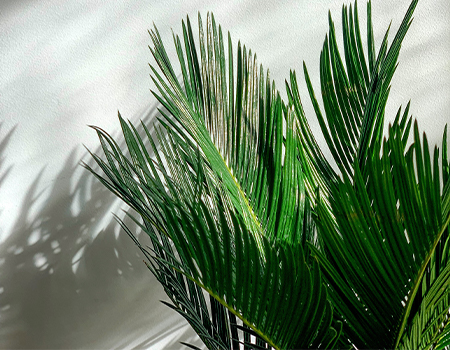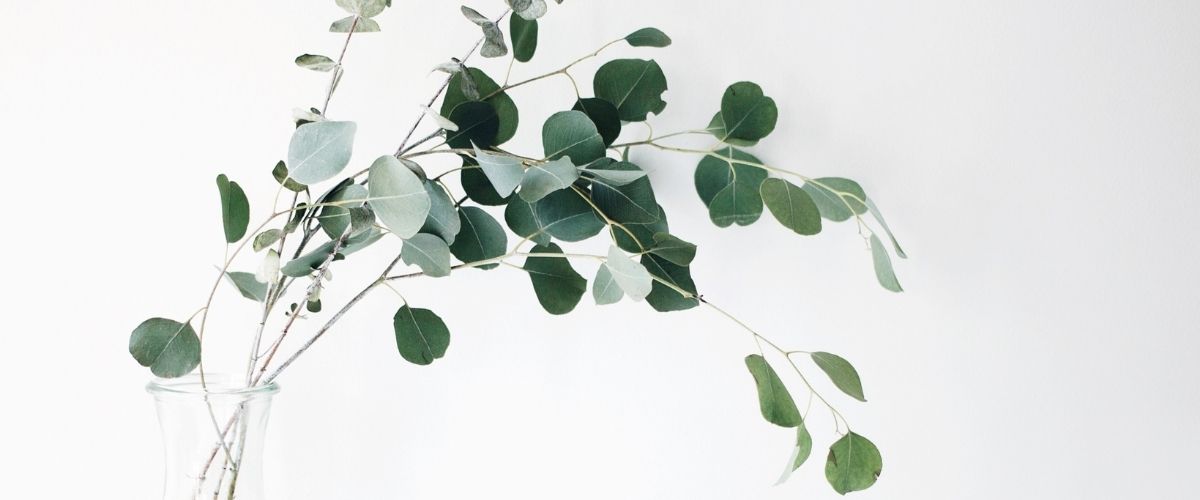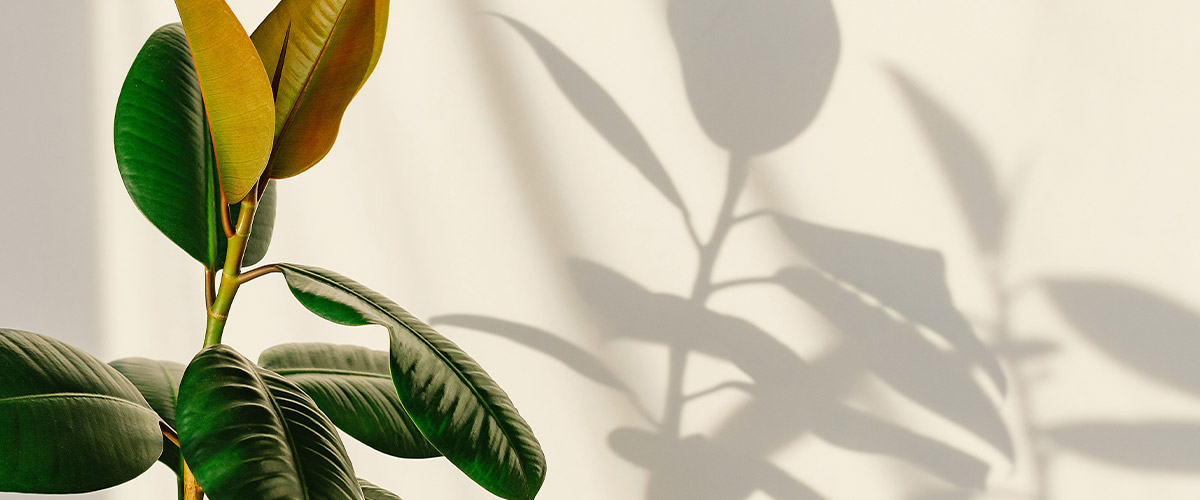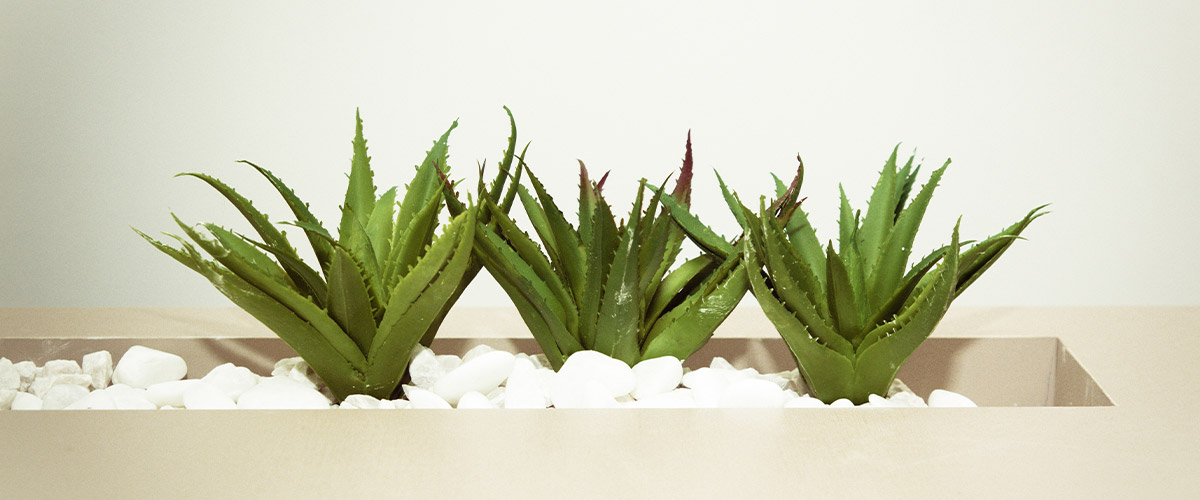Design
Frequently Used Plants In Spas and Benefits
22.11.2022

When we enter a Spa, the lush, vibrant plants that surround the space feel quite striking, aren’t they? As one of the most invigorating and natural ambiance dynamics of Spas, plants are not only colorful decor elements that are pleasing to our senses...
They’re also our silent supporters that purify our air, improve our mood and literally add life to the environment. So what are the most common plants used in Spas? And can we crown our home with these beauties to add a sprinkling of Spa atmosphere?
In this article, we are alluding to some Spa plants that you can be inspired to use at home.
True, plants do enliven the atmosphere of Spas and our homes. But their benefits are certainly not just that...
Brings Serenity to our Self: According to a study published in the Journal of Physiological Anthropology, plants release cytokines and stimulate our serotonin production when we give them attention and care. They’re even prescribed as “horticultural therapy” for depression and anxiety, especially in the UK and the US, due to their high efficacy.
What’s more is that according to studies from Chin-Yi University of Technology in Taiwan, even less than 20 minutes with plants is enough to make us feel more peaceful and serene!
Boosts our Wellbeing: Based on the theory of ‘biophilia’, the love of life or living things, we have an innate connection with nature. And this connection goes so deep that we feel a better a sense of belongingness, presence and “being at home” when we are surrounded by plants. Plants stimulate our parasympathetic nervous system, promoting our immunity, regenerating our cells and, thanks to their colors, textures and scents, distancing our minds from complex thoughts and leading us to a contented spirit.

Feeds our Positive Aura: Plants are also very sensitive to the energy frequencies that make up our biofield. Even when we don't necessarily physically interact with them, plants immediately sense and respond to the energy created by our feelings alone. And they return the positive frequencies emitted in the serene atmosphere of the Spas with their own ‘display of endearment’. You may think of it as the botanical version of the elating “purrs” you receive when you pet a cat. This invisible cycle of communication helps us to calm down more easily and revitalize our aura.
Enhances our Motivation: Indoor spaces adorned with plants also help us feel more conscious and motivated. According to a 2014 study conducted in the UK and the Netherlands, ‘green offices’ make employees at least 15% happier, more productive and focused than workspaces without plants.
Promotes our Creativity: Just as we can make a deeper connection with our quintessence when we do yoga or mandalas in nature, indoor plants activate the right lobe of our brain like a mini ‘forest bath’ and free the creative self within us.
Improves our Sleep: Plants release oxygen into the air by absorbing the carbon dioxide we release when we breathe through photosynthesis and neutralize harmful ozone in the space, helping us guard against ultraviolet rays that cause discomforts from irritation on our skin to headaches. This aids in promoting our sleep quality.
Purifies our Space: Many things used indoors have volatile organic compounds (VOCs) that can cause headaches, respiratory ailments and even cancer. According to NASA’s Clean Air Study, indoor plants greatly reduce harmful compounds in the air. They are also very capable in removing mold and bacteria that can grow in humid environments, causing allergies.

Contributes to our Self-Care: We are more or less familiar with the topical aids of plants. But do you know that they support our skin and hair care just by being around us? While photosynthesizing, plants increase relative humidity levels by releasing not only oxygen but also clean air vapor into the air. This contributes to our respiratory health as well as keeping our prone-to-dry skin and hair softer and livelier.
Spider Plant (Chlorophytum Comosum)
This lovely plant with long, bushy leaves not only removes 95% of harmful chemicals from the air, according to a NASA report, but also releases high levels of beta-carotene and vitamin C, creating a “rejuvenating” environment. Although it generally prefers bright light, it can also adapt to dimly lit areas such as bathrooms. If you want to keep it in your home, keep it slightly moist from spring to summer and a little drier in winter.
Peace Lily (Spathiphyllum “Mauna Loa”)

Healing our souls with its beauty and fragrance, this gorgeous plant can also clean our air of heavy harmful compounds such as ammonia, acetone and formaldehyde in a short time. The flower, which prefers indirect sunlight and high humidity, is also considered very “peaceful” in its care, as it lets us know when it’s thirsty by letting down its long stems. Should you have it in your home, make sure to place it away from kids and animals, as it can be poisonous if eaten.
Bamboo Palm (Chamaedorea)
This fast-growing bamboo palm is loved for its tropical splendor and for being safe for children and pets. One of NASA’s favorite natural purifiers, it also helps us ward off disease, especially in chilly winter, by adding intense levels of clean moisture to the air. But it doesn’t like the cold, and prefers to stay clear of the wind and direct sun and have its soil and leaves moist.
English Ivy (Hedera Helix)

Adding a lively look to the space, especially in hanging pots, this ivy is rich in anti-inflammatory and antioxidant components including polyphenols and flavonoids. When pruned correctly, this ivy can even provide insulation support on our walls. Likes moderate light but detests high humidity. So wait a bit between waterings.
Dracaena (Dracaena Marginata)

The “dragon tree”, which are displayed especially in large Spa areas, is one of the plants ranked high among NASA’s air cleaning plants. This plant, with many different leaf colors from light green to red and green variegated, reminds us of the tranquil environment of forests and instills us with a sense of calm. It likes indirect sunlight and thrives better in warm, slightly humid environments. But it can also withstand drier environments.
Gerberas (Gerbera Jamesonii)

This large daisy has a plethora of colors from white to yellow, red to fuchsia and secretes a unique scent, instantly adding an affectionate atmosphere to its environment. It also helps to improve our sleep quality by purifying harmful chemicals such as formaldehyde and benzene. This colorful sun-loving flower prefers moist soil. So make sure to water it every day, but in small amounts.
Chinese Evergreen (Aglaonema)

Used as a “good luck plant” in Feng Shui, this abundant-leaved plant is also considered one of the best air purifiers. Aglaonema has silvery, upright, ribbon-shaped leaves which create a striking ambience, especially when sit on wooden shelves. It can tolerate dim and even artificial light and prefers stable, light humidity. That’s also why it's deemed very suitable for wet areas in Spas and for our bathrooms.
Golden Pothos (Epipremnum Aureum)

Considered a “Superpower Plant” by NASA, this ivy prevents sleep apnea by releasing clear steam into the air. With its long ivy stems and glossy leaves, it looks particularly intriguing in a hanging pot or hanging over the edge of a shelf. Likes medium light, but can adapt to lower light as well. Let the soil dry out a little between waterings.
Rubber Tree (Ficus Benjamina)

Considered one of the most “Instagram-worthy” plants with its cute trunk and thick, shiny leaves, the rubber tree is also popular for its ability to break down harmful chemicals in the air in a pretty short time! This easy-to-grow plant likes indirect but bright light and prefers slightly moist soil.
Boston Fern (Nephrolepis Exaltata)
Commonly known as “love ladder”, this enormous plant not only purifies our air, but also acts as a natural humidifier. As they prefer a humid environment, they rather enjoy sitting in wet areas and bathrooms with indirect but bright light.
Snake Plant (Sansevieria Laurentii)

With its immense ability to release oxygen into the air, this pointed-leaved plant enhances our unwinding moments, especially in the relaxation areas of Spas and in our bedrooms. It’s exceptionally competent in filtering toxins such as formaldehyde, xylene, toluene and radiation. It likes natural and indirect light and grows better when placed by the windowsill. Water it once a week and let the soil dry between waterings.
Aloe Vera (Aloe Barbadensis Miller)

Aloe Vera, beloved for its soothing and anti-inflammatory effects on our skin, is also rich in vitamins and minerals and skin renewing salicylic acid, among others. It’s also vastly potent in reducing benzene in the air. Despite loving plenty of sunlight, this plant wouldn’t demand much watering, so it’s enough to water it when the top of the soil is dry.
In short, plants used in spas are an excellent way to add vitality, natural aesthetics and healthy effects to the space. So we may as well regard them as part of our self-care and review our home from this vantage point.
May we have calm and clean breaths and refreshing moods!
Located in the heart of the Italian Dolomites, Alpin Panorama...
Read moreIn the busy financial district of capital Tokyo, Hoshinoya Tokyo...
Read moreThere are often times that we feel the need to take on a...
Read more